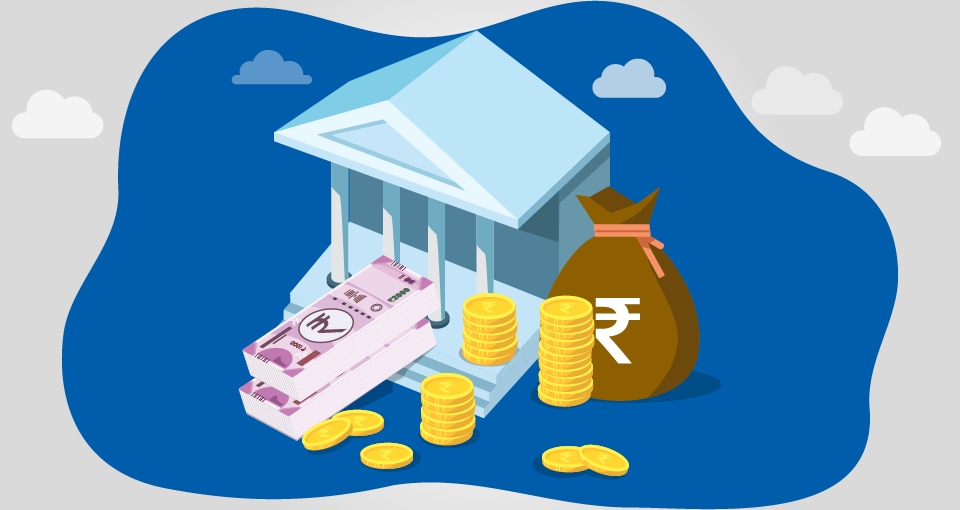Why You Should Consider Annualised Yield When Choosing Fixed Deposits

With safe and steady returns already making them a go-to instrument for investors looking to diversify their portfolio, increased FD rates in recent times have only made Fixed deposits more popular. Although this means more returns, make sure to look at the annualised yield of the fixed deposit you plan to invest in. In terms of an FD investment, yield includes the interest earned throughout your investment tenor plus other benefits that come with a fixed deposit. Let’s understand why it’s important for your FD.
What is Annualised Yield in FDs?
An annualised yield means the actual interest rate that you can get when you book an FD for over 365 days. An effective annualised yield is obtained on the basis of your fixed deposit’s cumulative returns calculated as per compound interest. An annualised yield will give you a holistic view of what your returns will be, which enables you to make smarter decisions. FD issuers generally give you the annualised yield along with the interest rate that is applicable to the fixed deposit you intend to invest in.
Also Read: How Do Fixed Deposits Compare to Other Savings Options?
Factors Affecting Annualized Yield of FDs
As a result of its dependency on fixed deposit rates, the yield generally increases with a lengthy tenor, just like the interest payout. However, since yield is calculated differently than the interest you earn, it is usually higher than the FD rates. You can check the yield and interest rate of a fixed deposit by a particular issuer by visiting their website or app or comparing them on financial marketplaces. Make sure that you don’t fall for higher pre-tax yield figures that entice investors. Instead, compare yields and FD interest rates separately, and plan your investment by using the FD interest calculator so you know your maturity proceeds before you invest. Also take your tax liability into consideration.
Keep in mind that while 5-year tax-saver FDs offer tax exemptions, other FD interest earnings are taxable as per your earnings and age.
How to Calculate Annualised Yield of your FD?
Cannot find an annualised yield calculator for your FD? Don’t worry! The yield on your fixed deposit can be calculated with a simple formula:
APY = (1+i/N) N -1.
Where,
‘N’ represents the number of compounding periods
‘i’ represents the interest rate.
While the above is the formula for the Annual Percentage Yield, you can also use the following for FD yield calculation:
Yield on FD = Amount received / Initial amount invested * years of investment in scheme.
An important thing to keep in mind is that the annualised yield is what you earn from your investment divided by the number of years of your investment.
To give you a better idea of the annualised yield calculation, here is an example:
Say you have booked a fixed deposit for 10 years with a compounding interest rate of 8.75%. Here, based on general calculations, the annualised yield rate would be 13.47%.
You might also like: How to Choose the Right Fixed Deposit Scheme
Things to Keep in Mind while Assessing FD Yield
While the yield is higher than the fixed deposit interest rate, your returns remain the same. This is because yield takes into consideration the power of compounding that adds to your returns and helps your investment to grow steadily.
Another important point to remember is that the yield will be substantially higher with an increase in the number of compounding periods. The number of compounding periods for a monthly calculation is 12, for a quarterly calculation is 4, for a half-yearly calculation is 2, and 1 in a yearly compounding fixed deposit.
As a result, the yield for a monthly compounding investment would be higher than quarterly compounding, which would, in turn, be higher than half-yearly which would be higher than yearly compounding FD.
Another crucial point to keep in mind about the annualised yield is the comparison. Make sure that you do not compare the yield of one FD issuer with another issuer’s interest rate. If you compare one with the other, the results of your comparison would be inaccurate, because the calculation for both is different even though the returns may be the same.
Difference between FD Yield and Interest Rate
To better understand the ways in which fixed deposits interest rates and yield are different, here are a few factors to consider:
Your interest rate gives you an idea about the growth of your investment and not your earnings. Yield, on the other hand, is the estimate of your returns including the interest earnings that are added to the principal invested over time to accrue higher earnings.
The interest rate is generally lower than the yield and vice versa.
Your FD rates stay constant based on your investment terms (such as your tenor and profile) but your yield varies, and generally increases as your tenor increases.
Interest can be calculated on varying terms – monthly, quarterly, half-yearly, and yearly. Yield is an annual projection and as such is calculated on an annual basis.
Annualised yield is a factor you should consider before investing in a fixed deposit, especially if you are balancing the risk in your portfolio. By knowing how much you are projected to earn, you can invest accordingly and ensure that you are strengthening your future financial wellbeing.
Be sure to study both the interest rates and the yield and keep yourself informed about your actual returns to accomplish your future financial goals. Explore various Fixed Deposit plans on Bajaj Markets along with their return rates, tenures, and other benefits to make an informed choice! Try your hand at the FD Calculator for a better idea of your returns and boost your long-term financial planning with Bajaj Markets!
